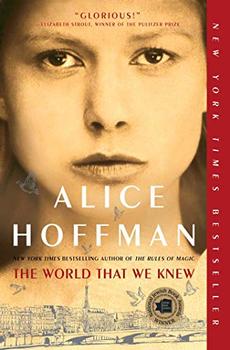Book Club Discussion Questions
In a book club? Subscribe to our Book Club Newsletter and get our best book club books of 2025!
For supplemental discussion material see our Beyond the Book article, Children's Art of the Holocaust and our BookBrowse Review of The World That We Knew.
Please be aware that this discussion guide will contain spoilers!
- This novel is both historical fiction and magical realism. How does Alice Hoffman achieve her unique writing style? What details does she use from each genre? What do each add to the emotional content of the story?
- After reading the novel, re-examine the title. Consider who "we" refers to in relation to the story and to your own life.
- How do you feel about Ava's relationship with the heron? Has an animal ever affected your spiritual life? Are emotions bound to human experience?
- In one of the darkest periods of human history, why do the characters still yearn to live even as the world is falling apart? What makes life precious? Is it love, family, memory, hope?
- In fairy tales, beasts are often humane, and humans are often cruel. In The World That We Knew the same is true. Discuss this theme in the novel and in your favorite fairy tales.
- Julien and Victor Levy are brothers with very different paths. How does each handle their wartime experience? What do they share despite their differences, and what aspects of their past influences them most?
- Marianne initially leaves her father's farm "to find something that belonged to her and her alone" (99), which leads her to Paris. Despite ending up where she began, do you think she has achieved this goal? Why or why not? Did her love story surprise you? What do you think the future holds for her?
- We learn halfway through the book that Hanni instructed her daughter to destroy Ava once Lea is brought to safety. Why do you think Lea defies her mother? Do you think she made the right decision? What may have changed her mind?
- The book begins with Hanni making a great sacrifice to save her daughter and ends with Ava doing the same. What do these women share? Is it possible to love someone else's children as if they were your own?
- Ava is a golem, a mysterious creature of Jewish legend, controlled by her maker and created to do another's bidding, but something changes. She longs for free will. Do you think she finds it?
- Ettie yearns to be a scholar and a rabbi, but because she's female these goals are unavailable to her. How does she create her own fate, and what leads her to rebel against the constraints of gender and history? Does war create opportunities for women to act outside of conventional roles?
- Lea's mother's voice is heard throughout the novel in the italicized sections. The loss of a mother and the loss of a child is central to the story. How are the long-lasting effects of loss woven through the novel?
- Can Ava posses a soul due to her ability to love? How does love change a world of hate, and how does it affect the characters in the novel?
Enhance Your Book Club
- To explore Jewish mysticism read Isaac Baschevis Singer's The Golem, a more traditional telling of the story with male protagonists, then write your own golem story.
- Using the map at the front of the book, make copies and trace the routes each of the main characters take throughout the story. Use different colors for each character, and make note of where their paths converge and diverge.
- Try making your own recipe for Hardship Soup using favorite family ingredients. Share at your next book group discussion. You can invent Ava's recipe for bread, again using your preferred ingredients.
- Gather photographs to create your own story of your family's history and share family legends and lore.
Unless otherwise stated, this discussion guide is reprinted with the permission of Simon & Schuster.
Any page references refer to a USA edition of the book, usually the trade paperback version, and may vary in other editions.
